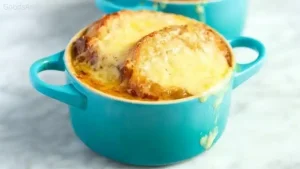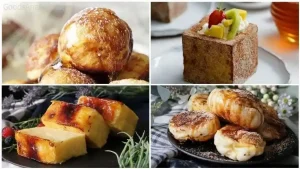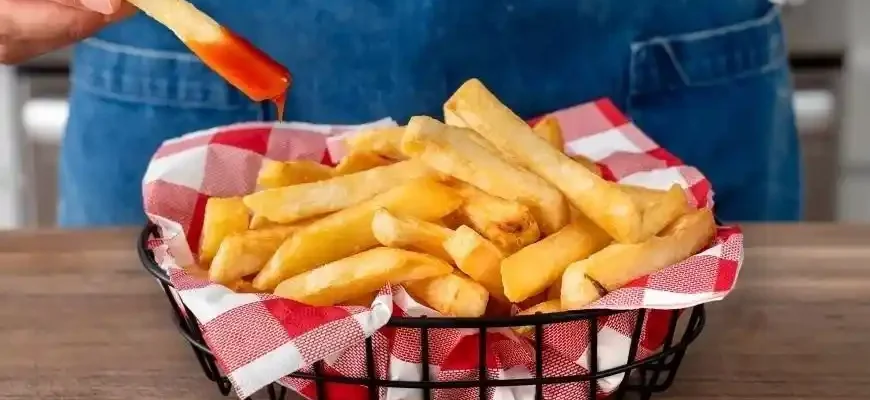French toast sticks, often seen as a fun, easy-to-eat twist on the classic French toast, have earned their spot as a beloved breakfast option in homes, restaurants, and even school cafeterias. Whether you’re a seasoned cook or a beginner in the kitchen, French toast sticks are simple to make, versatile, and can be adapted to suit a variety of tastes and dietary preferences. Let’s dive into how to prepare these golden, crispy treats and explore how to tweak them for different needs.
What Are French Toast Sticks?
At their core, French toast sticks are simply bread slices soaked in a mixture of eggs, milk (or milk alternatives), sugar, and spices, then cooked until golden brown. The difference lies in the shape—rather than a single large slice of French toast, the bread is cut into sticks, making them easier to dip into syrup, fruit compote, or even yogurt.
Ingredients for Classic French Toast Sticks
- Bread: Any type of bread works, but a thicker, heartier bread like challah, brioche, or Texas toast gives the best results. Sourdough or whole wheat can be used for a healthier or more robust flavor.
- Eggs: Eggs are the base of the batter. If you’re vegan, alternatives like flax eggs or chickpea flour work well.
- Milk: Traditional French toast uses cow’s milk, but you can substitute with almond milk, oat milk, or even coconut milk for different flavors and textures.
- Sugar: Granulated sugar or a natural sweetener like honey or maple syrup adds sweetness. If you’re watching sugar intake, you can use stevia or monk fruit sweetener.
- Spices: Ground cinnamon and vanilla extract are classic flavorings, but you can also add a pinch of nutmeg or cardamom for a unique twist.
- Butter or Oil: To fry the sticks and achieve a crispy, golden crust, butter or oil is essential. Coconut oil can add a subtle flavor, while olive oil keeps things heart-healthy.
The Basic Recipe for French Toast Sticks
- Preparation:
- Start by cutting your bread into 1- to 2-inch thick slices, then cut those slices into sticks (around 4-5 sticks per slice).
- Make the Batter:

- In a large bowl, whisk together 2 eggs, 1/2 cup of milk (or your choice of alternative), 1 tablespoon of sugar, 1 teaspoon of vanilla, and 1/2 teaspoon of cinnamon until smooth.
- Soak the Bread:
- Dip each bread stick into the batter, ensuring that each side is well-coated. Let it soak for about 30 seconds to absorb the liquid, but not so long that it becomes soggy.
- Cook the Sticks:
- Heat a skillet or frying pan over medium heat and add butter or oil. Once hot, place the soaked bread sticks into the pan. Fry for about 2-3 minutes on each side, or until golden and crispy.
- Serve:
- Serve immediately with syrup, fresh fruit, powdered sugar, or any other topping of your choice.
Variations and Customizations for Different Diets
While the classic French toast stick recipe is delicious, there are many ways to modify it to suit different preferences and dietary needs.
1. For a Vegan Option:
- Bread: Make sure to choose a vegan bread.
- Egg Substitutes: Use flax eggs (1 tablespoon ground flaxseed mixed with 3 tablespoons water) or a mixture of chickpea flour and water for a savory flavor.
- Milk Substitutes: Almond, oat, or soy milk are great dairy-free alternatives.
- Butter Substitutes: Coconut oil or vegan butter are perfect for frying.
2. Gluten-Free French Toast Sticks:
- Swap in gluten-free bread, which is available in most supermarkets. Look for one with a firm texture to hold up during soaking and frying.
- If you don’t mind a bit of a crunch, using gluten-free cornflakes or crushed rice cakes as a coating before frying can add a crispy texture.

3. Low-Carb/Keto French Toast Sticks:
- Use low-carb bread or even cloud bread (which is made from eggs, cream cheese, and baking powder).
- Sweeten with a low-carb sweetener like erythritol or stevia.
- Opt for ghee or coconut oil for frying for added flavor.
4. Sugar-Free French Toast Sticks:
- Use stevia, monk fruit, or erythritol in place of sugar.
- You can also make your own sugar-free syrup or opt for unsweetened applesauce or mashed berries as a dip.
Common Pitfalls and How to Avoid Them
Even the most experienced cooks can encounter a few hiccups while making French toast sticks. Here’s what to watch out for and how to fix it:
- Soggy Sticks: If your French toast sticks turn out too soggy, it might be because the bread was soaked too long or the heat wasn’t high enough. To avoid this, make sure you don’t soak the bread for more than 30 seconds. Also, medium-high heat ensures the sticks get crispy without overcooking inside.
- Burnt Sticks: If the outside of the sticks is burning before they cook through, your heat is likely too high. Turn it down slightly, and make sure the pan is properly preheated.
- Bland Flavor: If the sticks taste bland, it might be because the batter wasn’t well-seasoned. Don’t skip the cinnamon or vanilla, and feel free to experiment with other spices. A touch of salt can also enhance the flavors.

Nutritional Value and Health Considerations
While French toast sticks are a delicious treat, they can be high in calories, sugar, and fat depending on how they are made. Here are a few pointers to make them healthier:
- Reduce Sugar: Opt for natural sweeteners or cut down on the amount of sugar in the batter.
- Use Whole-Grain Bread: Whole-grain or whole-wheat bread increases fiber content and helps keep you fuller longer.
- Portion Control: Making smaller sticks allows you to control your portion sizes, which is great for anyone looking to monitor calorie intake.
Popular Opinions on French Toast Sticks Around the World
- Emily, 34, USA: “I make French toast sticks every weekend for my kids—they love dipping them in syrup and berries. It’s a fun way to get them to eat breakfast without much fuss. I love making a big batch and freezing them for later!”
- Carlos, 55, Mexico: “We’ve been eating French toast for generations, but making them into sticks adds a whole new level of joy! I like to sprinkle a little cinnamon sugar on top and pair it with fresh fruit. The kids go crazy for it.”
- Lina, 42, Germany: “I tried a healthier version of French toast sticks using spelt bread and almond milk. They were delicious and lighter, but still satisfying. It’s a great alternative for those who need to watch their carbs or have allergies.”
- Yuki, 28, Japan: “French toast sticks are not traditional in Japan, but they’ve gained popularity in cafes. I love how they can be served sweet or savory. Sometimes I top them with a bit of matcha powder for a Japanese twist!”
- Ahmed, 60, Egypt: “I’ve been cooking French toast sticks for years, and I always fry them in ghee for a richer taste. The family loves them for breakfast, especially with honey drizzled on top. I also like to serve them with a little yogurt on the side.”
Conclusion
French toast sticks are versatile, fun, and easy to make. Whether you’re feeding kids, hosting a brunch, or looking for a quick breakfast for yourself, these sticks will not disappoint. With the ability to cater to different dietary needs, from vegan to keto, they are a breakfast option that can please almost anyone. So, get your griddle ready, experiment with different variations, and enjoy a delicious start to your day!









